
Popular Succulent Varieties: Exploring Selections in a Pagoda Village

Succulents have become increasingly popular in recent years, with their unique shapes, colors, and low-maintenance requirements making them a favorite among plant enthusiasts. One place where succulents are particularly beloved is in the picturesque Pagoda Village, known for its stunning array of succulent gardens. Located in a remote corner of a tropical island, Pagoda Village is home to a diverse collection of succulent varieties, each with its own distinct characteristics and beauty.
We will take a closer look at some of the most popular succulent varieties found in Pagoda Village. From the iconic Echeveria to the elegant Aeonium, we will explore the different shapes, colors, and textures that make each variety unique. We will also discuss the care requirements for these succulents, including tips on watering, sunlight exposure, and soil conditions. Whether you are a seasoned succulent enthusiast or just starting your collection, this article will serve as a guide to help you choose the perfect succulent for your own garden.
- There are numerous popular succulent varieties to choose from
- You can find a wide selection of succulents in a pagoda village
- Research different succulent varieties to determine which ones you prefer
- Consider the growing conditions and care requirements of each variety before making a selection
- Seek advice from experienced gardeners or succulent enthusiasts for recommendations on popular varieties
- Look for unique and rare succulent varieties that can add a special touch to your garden
- Don't be afraid to experiment with different succulent varieties to find the ones that thrive in your specific climate
- Consider the size and growth habit of each succulent variety to ensure it fits well in your garden or container
- Pay attention to the colors and textures of different succulent varieties to create visually appealing arrangements
- Remember to provide proper care and maintenance for your chosen succulent varieties to keep them healthy and thriving
- Frequently Asked Questions
There are numerous popular succulent varieties to choose from
When it comes to succulents, the options are endless. These resilient plants come in a wide range of shapes, sizes, and colors, making them a favorite among plant enthusiasts and beginners alike. Whether you're looking to add some greenery to your indoor space or enhance your garden with unique textures, there is a succulent variety out there to suit your taste.
1. Echeveria
Echeverias are perhaps one of the most well-known succulent varieties. With their rosette-shaped leaves and vibrant colors, they make a stunning addition to any collection. From the popular Echeveria 'Lola' with its pastel pink hues to the Echeveria 'Black Prince' with its dark, almost black foliage, there is an Echeveria for every succulent lover.
2. Aloe Vera
Aloe Vera is not only a popular succulent but also a versatile one. Known for its medicinal properties, this plant is a must-have for any herbal enthusiast. Its spiky leaves and ability to thrive in arid conditions make it a low-maintenance choice. Plus, you can harvest its gel to soothe sunburns and minor skin irritations.
3. String of Pearls
If you're looking for a unique trailing succulent, the String of Pearls (Senecio rowleyanus) is an excellent choice. As its name suggests, this plant features long, cascading strands of small, spherical leaves that resemble a string of pearls. It thrives in bright, indirect light and is sure to be a conversation starter.
 Discover the Beauty of Yellow Flowering Succulent Ground Cover Plants
Discover the Beauty of Yellow Flowering Succulent Ground Cover Plants4. Sedum
Sedums are a diverse group of succulents, offering a wide range of shapes, sizes, and colors. From the compact Sedum rubrotinctum, also known as "Jelly Bean Plant," with its chubby, jelly bean-like leaves to the taller Sedum morganianum, also known as "Burro's Tail," with its long, trailing stems covered in plump leaves, there is a Sedum for every succulent enthusiast's preference.
5. Haworthia
Haworthias are a popular choice for their unique, architectural appearance. These small succulents have thick, fleshy leaves arranged in rosettes or spirals, often featuring intricate patterns or white markings. With their ability to tolerate lower light conditions, they make excellent houseplants.
These are just a few examples of the popular succulent varieties available. Whether you're a beginner or an experienced succulent collector, exploring the vast world of succulents is sure to bring joy and beauty to your plant-filled journey.
You can find a wide selection of succulents in a pagoda village
If you are a fan of succulents, then visiting a pagoda village is definitely a must-do on your list. These unique villages are known for their impressive collection of succulent varieties, offering a wide range of choices for plant enthusiasts.
Exploring the diverse succulent selections
When you step foot into a pagoda village, you will be greeted by a stunning display of succulents that will leave you in awe. The village is home to an extensive collection of different succulent varieties, each with its own unique charm.
One of the most popular succulent varieties you can find in a pagoda village is the Echeveria. With its rosette-shaped leaves and vibrant colors ranging from green to purple, this succulent is a favorite among many. Its low-maintenance nature and ability to thrive in various climates make it a perfect choice for both beginners and experienced gardeners.
 Find the Perfect Pink Flowering Succulent Vine
Find the Perfect Pink Flowering Succulent VineAnother fascinating succulent variety you can discover in a pagoda village is the Haworthia. Known for its striking geometric patterns and compact size, this succulent adds a touch of elegance to any indoor or outdoor space. Its ability to tolerate low light conditions makes it an ideal choice for those looking to brighten up their homes with a touch of greenery.
If you are looking for a unique succulent variety to add to your collection, then the Crassula is an excellent choice. With its stacked leaf appearance and beautiful shades of green, this succulent is sure to catch the eye of any passerby. Its ability to propagate easily makes it a great option for sharing cuttings with fellow succulent enthusiasts.
Choosing the right succulent for your space
With such a diverse selection of succulent varieties available in a pagoda village, it can be overwhelming to choose the right one for your space. Here are a few factors to consider when making your selection:
- Light requirements: Different succulents have different light requirements. Some thrive in bright, direct sunlight, while others prefer indirect or even low light conditions. Make sure to choose a succulent that matches the lighting conditions of your space.
- Watering needs: Succulents are known for their ability to store water in their leaves, making them drought-tolerant. However, it is essential to avoid overwatering as it can lead to root rot. Ensure you understand the watering needs of the succulent you choose.
- Space availability: Consider the size and growth habit of the succulent. Some varieties stay small and compact, making them suitable for small spaces or terrariums, while others can grow tall and wide, requiring more room to flourish.
By taking these factors into account, you can select the perfect succulent that will thrive in your space and bring a touch of natural beauty to your surroundings.
So, the next time you are in search of unique succulent varieties, make sure to pay a visit to a pagoda village. With its diverse selection and abundance of natural beauty, you are sure to find the perfect addition to your succulent collection.
Research different succulent varieties to determine which ones you prefer
Succulents are a diverse group of plants known for their unique and eye-catching forms. With so many varieties to choose from, it can be overwhelming to decide which ones are best for your garden or indoor space. By doing some research and exploring different options, you can find the perfect succulent varieties that suit your preferences and needs.
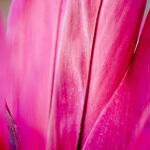 Unusual Colors in Succulent Foliage: Are Pink Leaves Normal?
Unusual Colors in Succulent Foliage: Are Pink Leaves Normal?One way to start your research is by familiarizing yourself with popular succulent varieties. These plants come in various shapes, sizes, and colors, each with its own distinct characteristics. Whether you're looking for a low-maintenance succulent or one that blooms with vibrant flowers, there's a variety out there that's just right for you.
Here are some popular succulent varieties to consider:
- Echeveria: Echeverias are one of the most beloved succulent varieties, known for their rosette-shaped leaves and stunning color variations. They come in shades of green, blue, purple, and even pink, making them a favorite choice for succulent enthusiasts.
- Haworthia: Haworthias are small, compact succulents with distinctive geometric patterns on their leaves. They are perfect for indoor spaces or as part of a succulent arrangement. With their unique appearance, they add a touch of modern elegance to any setting.
- Sedum: Sedums are versatile succulents that come in a wide range of shapes and sizes. They are drought-tolerant and easy to grow, making them a popular choice for beginners. Some sedums produce colorful flowers, adding an extra layer of beauty to your garden.
As you continue your research, you'll discover many other succulent varieties, each with its own charm and appeal. Don't be afraid to experiment and try something new. Consider the growing conditions in your area, such as sunlight and temperature, to ensure that the succulents you choose will thrive in your space.
Remember, the world of succulents is vast, and there's always something new to explore. Take your time, enjoy the process, and soon you'll have a collection of stunning succulents that bring life and beauty to your surroundings.
Consider the growing conditions and care requirements of each variety before making a selection
When it comes to choosing succulents for your garden or indoor space, it's important to consider their growing conditions and care requirements. Each variety of succulent has its own unique needs, and understanding these factors is essential for their successful cultivation.
1. Echeveria
Echeverias are one of the most popular succulent varieties, known for their rosette-shaped leaves and vibrant colors. They thrive in bright sunlight and well-draining soil. It's important to water them sparingly, allowing the soil to dry out completely between waterings.
2. Aloe Vera
Aloe vera is not only a popular succulent but also a medicinal plant. It prefers bright light but can tolerate some shade. A well-draining soil mix and infrequent watering are key to its success. Aloe vera also benefits from occasional fertilization during the growing season.
3. Haworthia
Haworthias are small succulents with unique textures and patterns on their leaves. They prefer bright, indirect light and well-draining soil. These plants are adapted to dry conditions and should be watered sparingly, allowing the soil to dry out between waterings.
 Top Choices: Popular Flowering Succulent House Plants for Your Home
Top Choices: Popular Flowering Succulent House Plants for Your Home4. Sedum
Sedums, also known as stonecrops, are versatile succulents that come in various shapes and sizes. They are drought-tolerant and prefer full sun to partial shade. Sedums are easy to care for and require minimal watering once established.
5. Crassula
Crassulas, commonly known as jade plants, are popular for their thick, fleshy leaves and tree-like growth habit. They prefer bright light but can tolerate some shade. Crassulas should be watered thoroughly and allowed to dry out before the next watering.
- Tip: Remember to always check the specific care instructions for each succulent variety to ensure their optimal growth and health.
By considering the growing conditions and care requirements of each succulent variety, you can create a diverse and thriving collection in your garden or indoor space. Whether you choose echeverias, aloe vera, haworthias, sedums, or crassulas, these popular succulent varieties are sure to bring beauty and charm to your surroundings.
Seek advice from experienced gardeners or succulent enthusiasts for recommendations on popular varieties
If you are a succulent lover or just starting to explore the world of these fascinating plants, it's always a good idea to seek advice from experienced gardeners or succulent enthusiasts. They can provide valuable insights and recommendations on popular succulent varieties to add to your collection.
Succulents have gained immense popularity in recent years due to their unique shapes, colors, and low maintenance requirements. With countless varieties to choose from, it can be overwhelming to decide which ones to include in your garden or indoor space. Let's take a look at some popular succulent selections that have caught the attention of gardeners around the world.
1. Echeveria
Echeveria is a genus of stunning rosette-shaped succulents that come in various sizes and colors. These plants are known for their thick, fleshy leaves, which can be smooth or textured. From vibrant greens to pastel pinks and purples, Echeverias add a touch of elegance to any succulent arrangement.
2. Crassula
Crassula, commonly known as Jade Plants, are highly popular succulents with thick, glossy leaves. They are often grown as houseplants and are considered symbols of good luck and prosperity. These plants are easy to care for and can tolerate neglect, making them perfect for beginners.
 Discover a Diverse Selection of Vibrant Colored Succulent Plants
Discover a Diverse Selection of Vibrant Colored Succulent Plants3. Haworthia
Haworthia is a diverse genus of succulents that are known for their intriguing geometric patterns and small size. These plants typically have rosette-shaped leaves with intricate white markings or raised bumps. Haworthias are ideal for indoor gardening and can thrive in low-light conditions.
4. Aloe
Aloe plants are not only known for their soothing gel but also for their striking appearance. These succulents have spiky, pointed leaves that come in various shades of green, red, or even variegated patterns. Aloe plants are easy to grow and can make a statement in any garden or container arrangement.
5. Sedum
Sedum is a diverse genus of succulents that encompasses a wide range of forms and colors. From trailing varieties perfect for hanging baskets to upright selections with striking foliage, Sedums offer endless possibilities. These plants are drought-tolerant and can thrive in various conditions, making them versatile choices for any garden.
Remember, the world of succulents is vast, and these are just a few popular varieties to consider. Each variety has its own unique characteristics and care requirements, so it's important to do your research and select plants that align with your preferences and gardening conditions.
Whether you're a seasoned succulent collector or a beginner, exploring different varieties and expanding your collection can be an exciting journey. So, seek advice, experiment with different selections, and enjoy the beauty and resilience of these captivating plants.
Look for unique and rare succulent varieties that can add a special touch to your garden
Succulents have become increasingly popular in recent years due to their unique and striking appearance. Their ability to store water in their leaves and stems makes them a great choice for low-maintenance gardens.
In this article, we will explore some of the most popular succulent varieties that can add a special touch to your garden. Whether you are a seasoned succulent enthusiast or a beginner looking to start your collection, these selections will surely catch your eye.
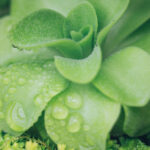 Low-Water Succulents: Discovering Thin-Leafed Varieties
Low-Water Succulents: Discovering Thin-Leafed Varieties1. Echeveria 'Black Prince'
This succulent variety is known for its dark, almost black leaves, which create a stunning contrast against its vibrant red flowers. Echeveria 'Black Prince' is a favorite among succulent enthusiasts and can be a focal point in any garden or container.
2. Crassula ovata 'Jade Plant'
The 'Jade Plant' is one of the most popular succulents due to its thick, fleshy leaves and tree-like appearance. With proper care, this variety can grow into a small indoor tree, making it a unique addition to any home.
3. Sedum morganianum 'Burro's Tail'
Known for its cascading tendrils of fleshy, blue-green leaves, the 'Burro's Tail' is a stunning succulent that is perfect for hanging baskets or trailing down the edges of containers. Its unique appearance and low maintenance requirements make it a popular choice among succulent enthusiasts.
4. Aloe vera
No list of popular succulent varieties would be complete without mentioning the versatile Aloe vera. Besides its well-known medicinal properties, Aloe vera is a beautiful succulent with its fleshy, spiky leaves and vibrant yellow flowers. It thrives in arid climates and can be an excellent addition to any garden.
These are just a few examples of the many unique and rare succulent varieties available. Whether you choose to create a succulent garden or add them as accents to your existing garden, these selections are sure to enhance the beauty and charm of your outdoor space.
Don't be afraid to experiment with different succulent varieties to find the ones that thrive in your specific climate
When it comes to succulent varieties, the options are seemingly endless. From the classic echeverias to the unique lithops, there is a succulent out there to suit every taste and style. If you're new to the world of succulents or simply looking to expand your collection, don't be afraid to experiment with different varieties to find the ones that thrive in your specific climate.
1. Echeveria
Echeverias are perhaps the most popular succulent variety, known for their rosette-shaped leaves and vibrant colors. These hardy plants come in a wide range of sizes and shapes, making them versatile for both indoor and outdoor settings. Echeverias prefer bright sunlight and well-draining soil, making them ideal for gardens and containers.
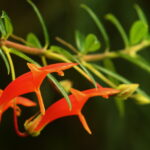 Unveiling the Special Qualities of Dolphin Succulent
Unveiling the Special Qualities of Dolphin Succulent2. Haworthia
Haworthias are another popular choice, characterized by their small, fleshy leaves and intricate patterns. These succulents are known for their ability to tolerate low light conditions, making them perfect for indoor spaces. Haworthias are also relatively forgiving when it comes to watering, as they can handle periods of drought.
3. Sedum
Sedums, also known as stonecrops, are a diverse group of succulents that come in various shapes, sizes, and colors. These plants are typically low-growing, with fleshy leaves and clusters of star-shaped flowers. Sedums are known for their ability to tolerate hot and dry conditions, making them excellent choices for rock gardens and xeriscapes.
4. Crassula
Crassulas are a large genus of succulents that encompass a wide range of shapes and sizes. From the popular jade plant (Crassula ovata) to the unique paddle plant (Crassula perforata), there is a crassula for every succulent enthusiast. These plants are generally easy to care for, requiring bright light and well-draining soil.
5. Lithops
Lithops, also known as living stones, are fascinating succulents that mimic the appearance of stones or pebbles. These plants have evolved to blend in with their natural surroundings, making them excellent camouflage artists. Lithops require bright light and minimal watering, as they have adapted to survive in arid environments.
Remember, these are just a few examples of the many succulent varieties available. Don't be afraid to explore and find the ones that resonate with you and your gardening style. Whether you're a beginner or an experienced succulent enthusiast, experimenting with different varieties is part of the joy of cultivating these fascinating plants.
Consider the size and growth habit of each succulent variety to ensure it fits well in your garden or container
When selecting succulents for your garden or container, it is essential to consider the size and growth habit of each variety. This will help you ensure that the succulents you choose will fit well and thrive in their designated space.
 Introducing Our Lime Green Succulent: A Perfect Addition!
Introducing Our Lime Green Succulent: A Perfect Addition!Succulents come in a wide range of sizes, from small and compact to large and sprawling. Some varieties may grow tall and upright, while others may have a sprawling or cascading habit. By understanding the growth habit of each succulent, you can plan and arrange them in a way that creates a visually appealing and harmonious display.
Compact and Small Succulents
Compact and small succulents are perfect for those with limited space or who prefer a more delicate arrangement. These varieties typically stay small and are ideal for small containers or as accents in rock gardens. Some popular compact and small succulent varieties include:
- Haworthia: Known for their rosette-shaped leaves, Haworthias are perfect for small containers or terrariums.
- Echeveria: With their rosette-shaped foliage and vibrant colors, Echeverias are popular choices for succulent arrangements.
- Sedum: Sedums come in various sizes, but many compact varieties such as Sedum dasyphyllum or Sedum rubrotinctum are well-suited for small spaces.
Tall and Upright Succulents
If you're looking to add height and vertical interest to your garden or container, tall and upright succulents are the way to go. These varieties can serve as focal points or backdrops for shorter succulents. Here are a few popular tall and upright succulent varieties:
- Agave: Agaves are known for their architectural forms and can add a sculptural element to your garden.
- Aloe: Aloes not only have striking foliage but also produce beautiful flower spikes, adding both height and color to your succulent display.
- Sansevieria: Also known as "Snake Plants" or "Mother-in-law's Tongue," Sansevierias are known for their upright growth and architectural appeal.
Remember, when selecting succulents based on size and growth habit, consider the space available and the overall aesthetic you wish to achieve. By carefully choosing a mix of compact and tall succulents, you can create a visually stunning succulent garden or container arrangement that will be the envy of all.
Pay attention to the colors and textures of different succulent varieties to create visually appealing arrangements
When it comes to succulents, their diverse range of colors and textures can truly elevate your garden or indoor space. Whether you're a seasoned succulent enthusiast or just starting out, exploring the wide selection of popular succulent varieties can be a delightful journey.
Vibrant and Bold
If you're looking to make a statement, consider incorporating succulents with vibrant and bold colors into your arrangements. Varieties such as Echeveria 'Lola' with its stunning pinkish-purple hues, or Aeonium 'Zwartkop' with its dark burgundy leaves, can add a pop of color to any succulent garden.
Soft and Subtle
For a more understated and serene look, opt for succulents with soft and subtle colors. Sedum 'Angelina', with its delicate yellow foliage, or Haworthia fasciata, commonly known as "Zebra Plant", with its white stripes on dark green leaves, can create a calming and tranquil atmosphere in your space.
 Succulent Growth Habits: Tall or Compact?
Succulent Growth Habits: Tall or Compact?Textural Marvels
Succulents are not just about colors, but also about textures. Incorporating varieties with unique textures can add depth and interest to your arrangements. The crinkled leaves of Crassula ovata 'Gollum' or the fuzzy leaves of Kalanchoe tomentosa, also known as "Panda Plant," can create a tactile experience and make your succulent garden visually captivating.
Mix and Match
Don't be afraid to mix and match different succulent varieties to create visually stunning arrangements. Combining succulents with varying colors and textures can result in a harmonious and dynamic display. Experiment with different combinations and arrangements to find the perfect balance that suits your aesthetic preferences.
Remember to pay attention to the growing requirements of each succulent variety to ensure they thrive in their new environment. Some succulents prefer bright sunlight, while others thrive in partial shade. With proper care and attention, you can create a succulent garden that not only pleases the eye but also brings joy and tranquility to your everyday life.
Remember to provide proper care and maintenance for your chosen succulent varieties to keep them healthy and thriving
Once you've selected your favorite succulent varieties for your pagoda village, it's important to give them the proper care and maintenance they need to ensure they stay healthy and thrive in their new environment. Succulents are known for their ability to store water in their leaves, stems, and roots, making them a low-maintenance option for indoor and outdoor gardens. However, they still require some attention to ensure their long-term success.
Watering
One of the most important aspects of succulent care is proper watering. Succulents are native to arid regions and are adapted to survive in dry conditions. Therefore, it's crucial not to overwater them, as this can lead to root rot and other issues. Instead, follow the "soak and dry" method. Allow the soil to dry out completely between waterings, and then thoroughly saturate the soil when watering. Remember to water the soil directly and avoid getting water on the leaves, as this can promote fungal diseases.
Sunlight
Succulents love bright light and thrive in sunny locations. Place your succulents in an area where they receive at least six hours of direct sunlight per day. However, be cautious of intense midday sun, especially during the summer months, as it can scorch the leaves. If you notice signs of sunburn, such as brown spots or bleached-out patches, provide some shade or move the succulent to a slightly shadier spot.
 Top Heat-Loving Succulents: Perfect for Campfire Conditions
Top Heat-Loving Succulents: Perfect for Campfire ConditionsWell-draining Soil
Succulents prefer soil that drains well and doesn't hold excess moisture. Use a well-draining potting mix specifically formulated for succulents or create your own by combining equal parts of regular potting soil, perlite, and coarse sand. This type of soil will allow excess water to drain away, preventing the roots from sitting in water, which can lead to root rot.
Temperature and Humidity
Succulents thrive in warm and dry conditions, with temperatures between 60°F and 80°F (15°C and 27°C) being ideal. They can tolerate cooler temperatures, but it's best to protect them from frost and freezing temperatures, as this can severely damage or kill the plants. In terms of humidity, most succulents prefer low humidity levels, so it's important to provide good air circulation around the plants to prevent moisture buildup.
Fertilization
While succulents can survive in nutrient-poor conditions, they will benefit from occasional fertilization. Use a balanced, low-nitrogen fertilizer designed for succulents and follow the instructions on the package for application rates. Fertilize during the active growing season, typically from spring to early fall, and refrain from fertilizing during winter dormancy.
By following these care tips and giving your succulent varieties the attention they need, you can ensure they thrive and continue to beautify your pagoda village for years to come.
Frequently Asked Questions
1. What are succulents?
Succulents are plants that store water in their leaves, stems, or roots, allowing them to survive in arid conditions.
2. How do I care for succulents?
Succulents require well-draining soil, plenty of sunlight, and infrequent watering to prevent root rot.
3. Can succulents be grown indoors?
Yes, many succulent varieties can be grown indoors as long as they receive adequate sunlight and proper care.
4. How often should I water my succulents?
Most succulents only need to be watered every 1-2 weeks, allowing the soil to dry out completely between waterings.
If you want to read more articles similar to Popular Succulent Varieties: Exploring Selections in a Pagoda Village, you can visit the Varieties and Colors category.

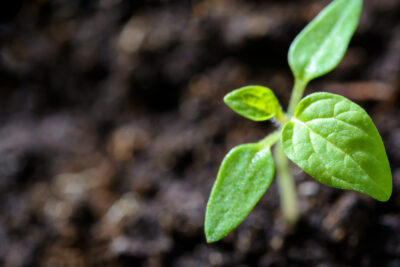
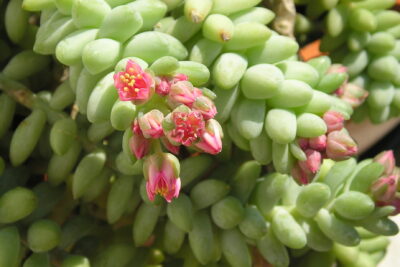



You Must Read